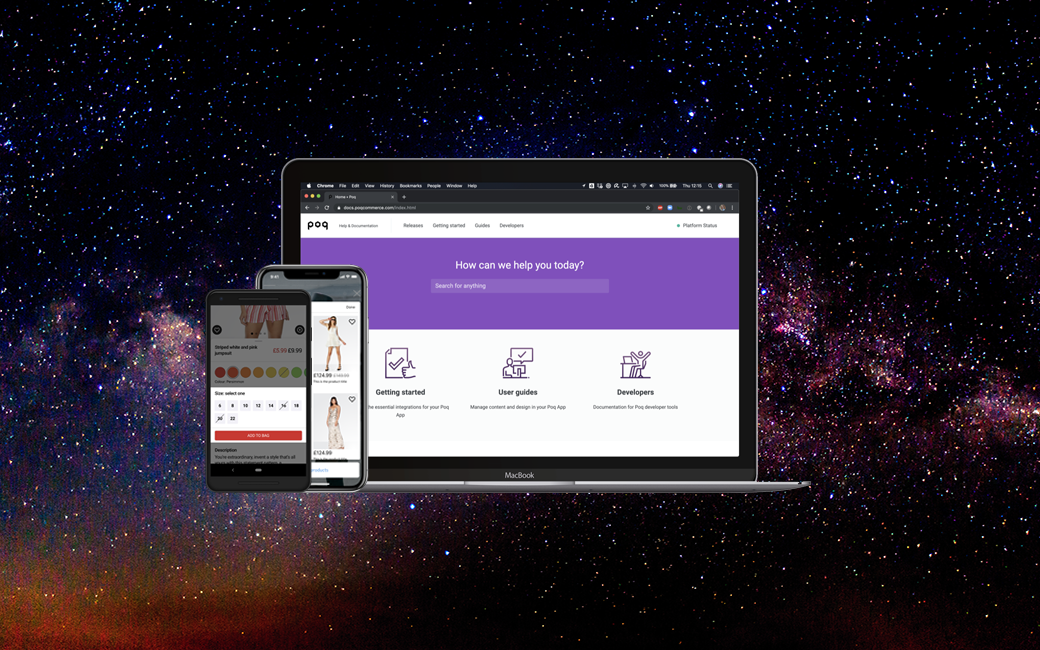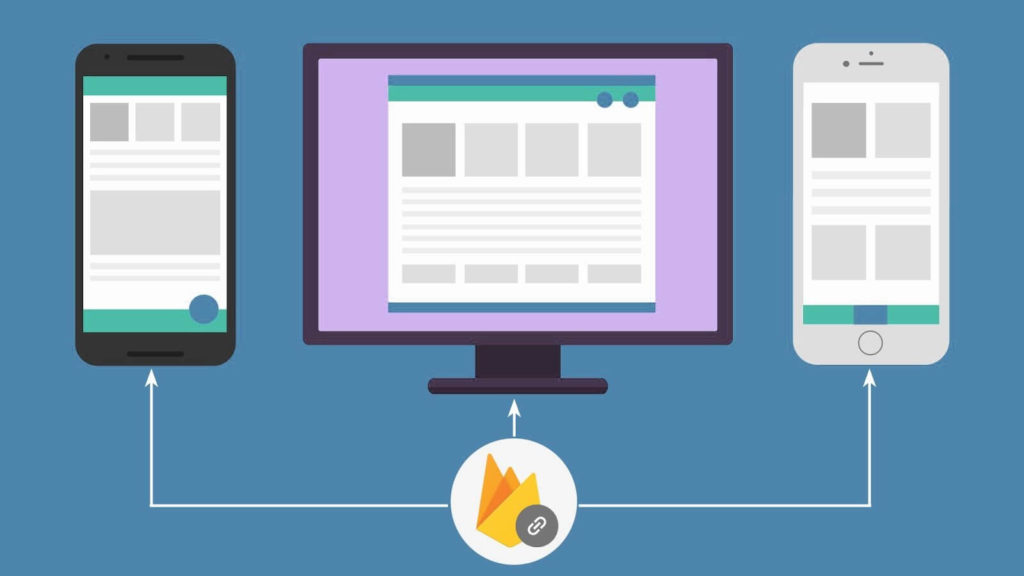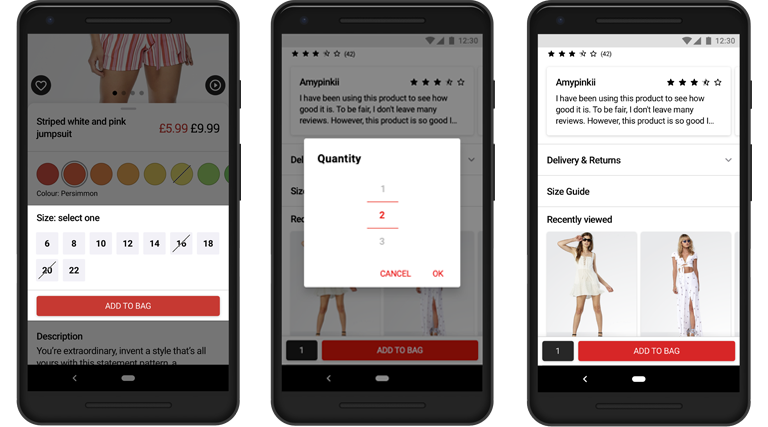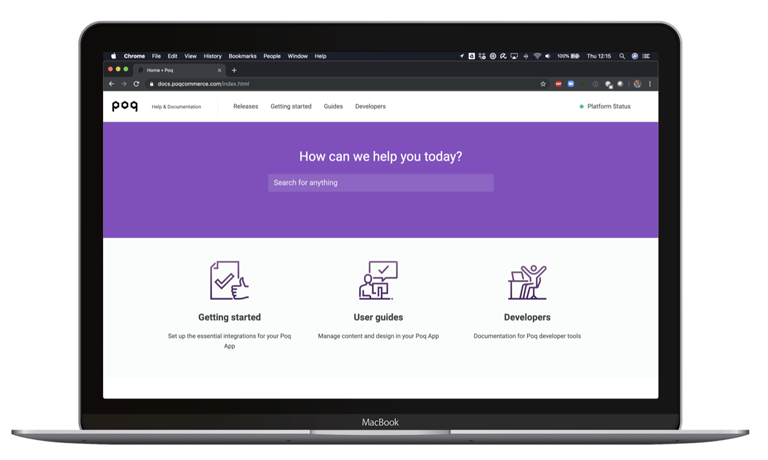Poq platform release: Jupiter has landed!

by: Balint Szeplaki
Head of Product
Jupiter has arrived! Our latest platform release, Jupiter, will provide Poq clients with improved flexibility, best in-class app marketing capabilities, an improved Stories feature, a new documentation hub, and more.
App Marketing

We have now made it easier to bring customers to the app through the power of Google Firebase’s Dynamic Links. The new feature allows for deep linking and powerful app marketing capabilities. With Dynamic Links a single link can work the way the client wants on multiple platforms and whether or not the client’s app is installed on the user’s phone.
Utilising a single link, Firebase can detect whether the user has the app and therefore direct the user to this deep link in-app. In the instance where the user does not have the app installed, the Poq client, on set-up, will have the option to choose whether to direct the user to the specific content on the web or to the App / Google Play Store to download the app. In the latter case, once the user has downloaded the app, upon launch, is welcomed with the deep link content – providing a frictionless user journey.
With Dynamic Links, Poq clients are empowered to effortlessly set up cross channel links that improve the omnichannel experience and convert web users into loyal app customers. On top of that, retailers can track and analyse their efforts to ensure they are building communication strategies that positively impact the business. With Firebase’s Console, retailers can follow the customer’s journey from Dynamic Link to app open / launch, to purchase. As a result, they can attribute engagement and revenue generated by their Dynamic Links.
To learn more about Dynamic Links and its benefits, have a quick read of our dedicated Dynamic Links blog.
We’re even more flexible

As part of an ongoing effort to enable development and maintainable customisation on the Poq platform we have rearchitected the Product Details screen into the new modularised format. Meaning, we broke the screen down into smaller components – ultimately increasing the possibilities for more granular customisations through the use of different layouts and behaviour changes. As a result, both external developers and our very own Professional Services team will have the ability to tweak, change, and rearrange the Product Details screen through the Poq Software Development Kit (SDK).
To create some ready to use components for customisation on the Product Details screen, we have gone ahead and created three new features that developers, either within Poq or externally, can now implement for app users:
- Alternative add-to-cart flow: Retailers can now choose to have their users select a size prior to adding items to the bag.
- Alternative quantity picker: Users can be provided with the ability to easily add or remove quantity amounts using a dropdown picker that is stock aware upon adding to bag.
- Sticky add-to-bag: The add-to-bag action can be made to always present at the bottom of the screen – leaving the ability to add items to the bag always within reach.
Introducing our new documentation hub

In an ongoing effort to ensure all of our clients are provided with all the information they need to set up and run an app built on the Poq platform, we have created our very own knowledge and documentation hub. The new Poq documentation hub means clients can now:
- easily access detailed information about their app’s features and version history
- learn how to set up integrations to launch and run their app
- find guidance on using the Poq Content Management System (CMS) to manage the app
- use the App Styler tool to make the designer of the app fit your brand
- see developer documentation for our Software Development Kit (SDK) frameworks, data extensions, and APIs.
The documentation site also hosts latest updates and our Platform Status monitor, where clients can see service levels across the platform.
Taking stories to the next level

Our popular Stories feature, you know the one that reminds you of Instagram, has been levelled up. Clients have always had the capability of linking story cards to products, but now they can link to an entire category from a story – providing users with a wider range of browsing possibilities.
When the user swipes up on the story card, instead of viewing specific products, the user will be able to interact with an entire category, e.g. dress, trousers, trainers. Once displayed, the user can interact with the category within the Stories features or select ‘See all products’ to be directed to the category’s product listing page. Ultimately, the user is in control of how he or she wants to browse the category.
General improvements
I’m sure many of you remember the launch of our App Styler tool in our Atlas release. If not and you want a refresher check out our previous release announcement. Well, we have quickly iterated on the first version of App Styler and made App Styler v2 more comprehensive and easier to use. We added asset management so you can seamlessly manage app icons. Additionally, we expanded the coverage of App Styling for iOS and Android to cover the new frameworks and the remainder of screens.
To ensure that our clients are prepared for peak, we have improved the speed and load time of our Wishlist on iOS. Large requests are broken down into separate requests and as users scroll down the wishlist, the older items will be loaded as and when needed. So in peak times, when only the top 25 products really matter, the app doesn’t waste time loading items that probably won’t be seen. Consequently, this improves the overall user experience on the app, just in time for the peak shopping season when wishlisting gains even more traction.
Minor improvements
Analytics: We updated our events and parameters within the events to more closely align with Firebase as the sunsetting of Google Analytics for apps draws near.
Learn more about our overall migration to Firebase in one of our latest blogs.
Facebook SDK: We updated the Facebook integration by improving the event parameters that are reported in Facebook and as a result, clients can capitalise on Facebook’s app marketing capabilities.
Filter: By popular demand, we have switched the positions of the Apply and Clear functions on the Filter to provide a more familiar and smoother shopping experience.


